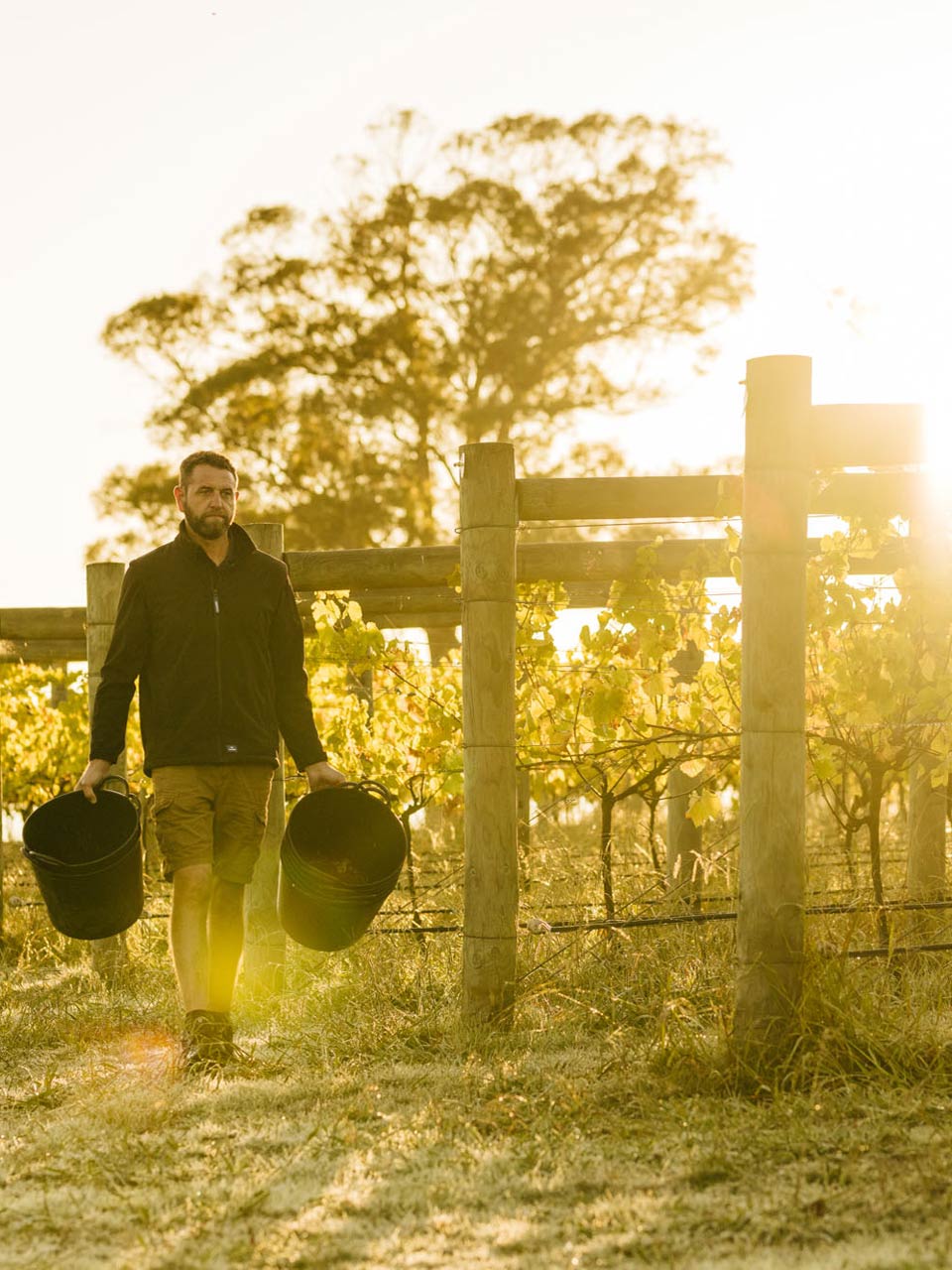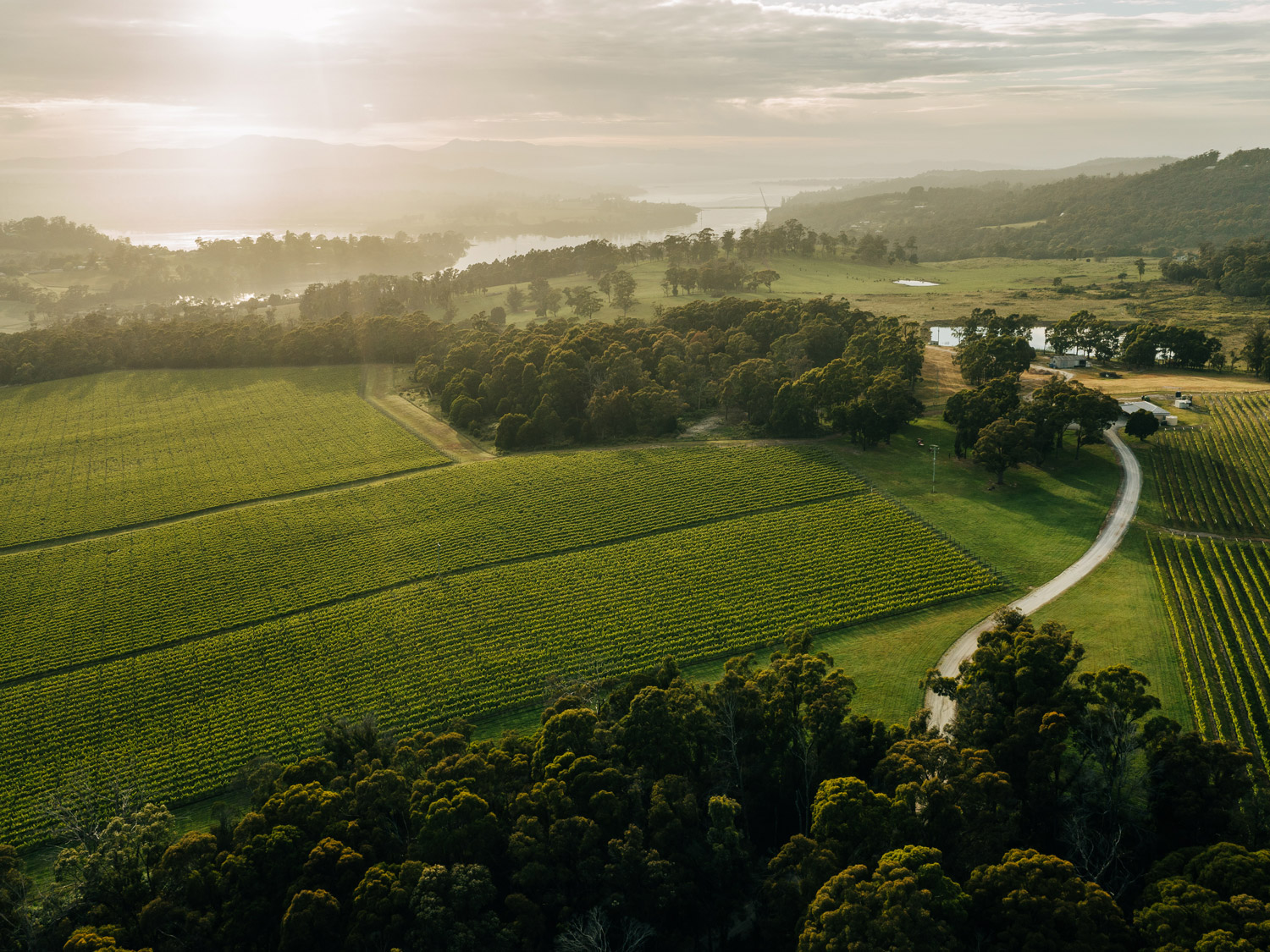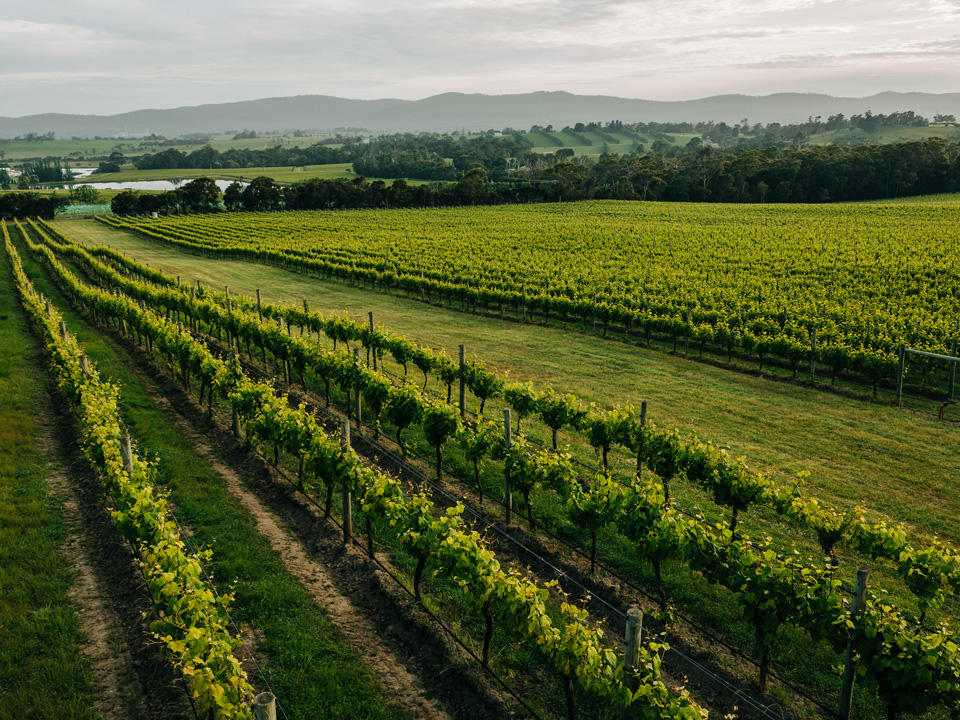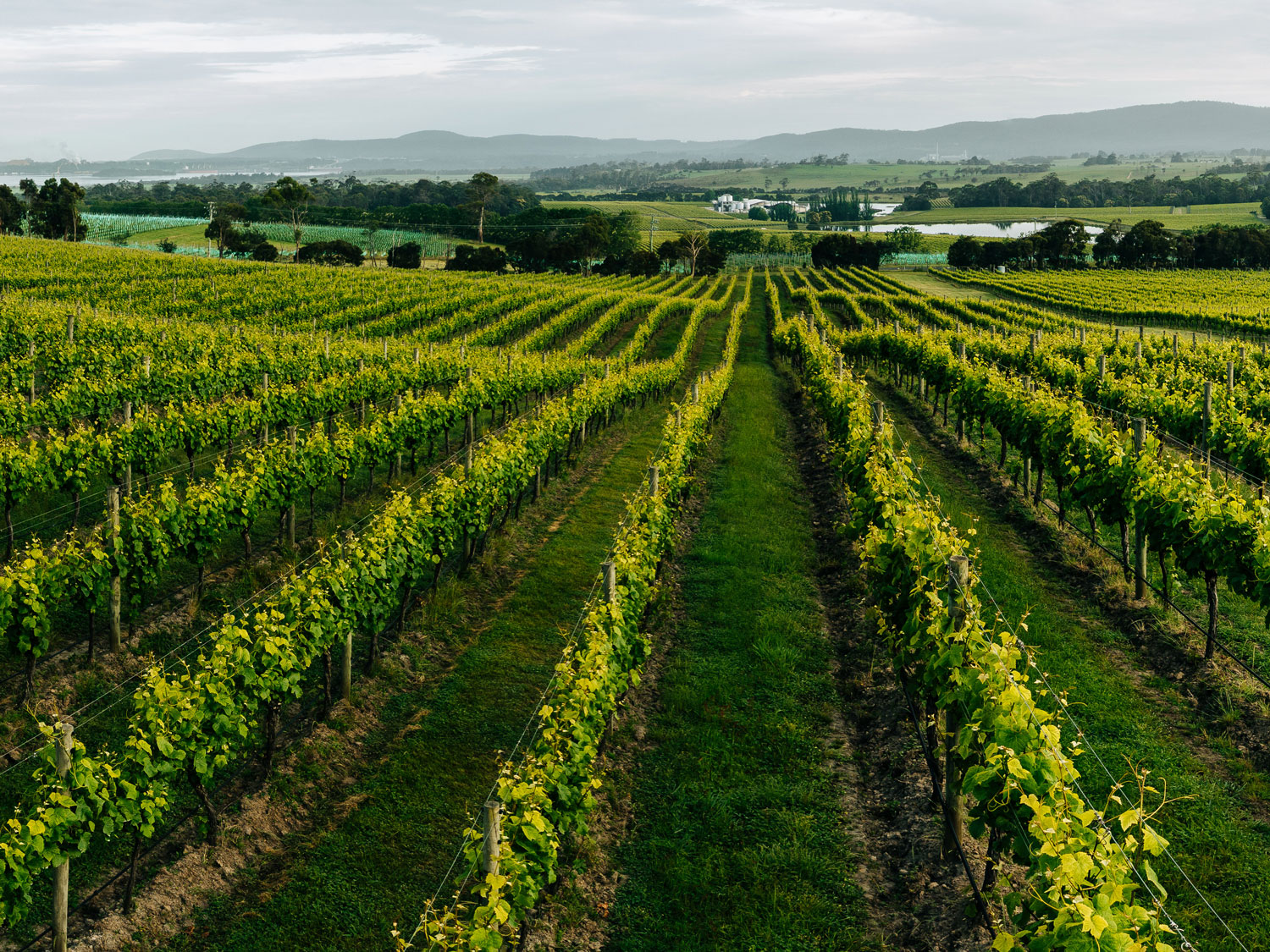Small Wonder is a new brand on a mature property in Tasmania’s Tamar Valley, specialising in pinot noir, chardonnay and aromatic whites. In 2020, Goaty Hill was sold to the Overstory group – which also has vineyards in Margaret River – by the founders after two decades on the property. Vineyard manager Wayne Nunn in consultation with Dylan Grigg has converted the site from 20 years of conventional practcies to certified organic viticulture, and together with group winemaker Andrew Trio, the team have undertaken concerted works to map and understand the micro terroirs of the site. Pinot noir, chardonnay, riesling, sauvignon blanc and pinot gris make up the varietal mix across 25 hectares of varied aspects and soil.
The Small Wonder vineyard is an example of a vineyard that has had 20+ years of conventional management being converted successfully to a fully organic program. With a focus on fruit quality, alongside ecological health, this is not as simple as changing a regime of applications, as Grigg describes through their considered approach to pruning. “The adoption of cane pruning across specific blocks has opened the canopy and reduced disease pressure, this is essential as organic production is not just about spraying but all the finer details that go into site management,” he says. “We discovered early on that although the site had a history of wrapping up to four canes for yield – but with a shift to certified organic production and a quality focus this was difficult to manage. We have since found a balance between two and 2.5 canes per vine to be ideal – fitting in with our detailed canopy management quality focus and organic production.”
The first Small Wonder wines were released in 2022. The vineyard was first planted in 1998, with subsequent plantings through to 2023 taking it to almost 25 hectares under vine across many aspects with blocks on different orientations and soil types. Pinot noir, chardonnay, riesling, sauvignon blanc and pinot gris make up the varietal mix, which is an ideal makeup for the site says Grigg. “The vineyard is close to bodies of water so is moderated from the extreme frosts and springtime chills of other regions. We have enough sunshine and natural humidity to avoid excessive stress and reliance on water. The combination of aspect, rainfall and prevailing winds allow us to ripen fruit at moderate sugar levels while retaining good acidity.”
“The adoption of cane pruning across specific blocks has opened the canopy and reduced disease pressure, this is essential as organic production is not just about spraying but all the finer details that go into site management. We discovered early on that although the site had a history of wrapping up to four canes for yield – but with a shift to certified organic production and a quality focus this was difficult to manage. We have since found a balance between two and 2.5 canes per vine to be ideal – fitting in with our detailed canopy management quality focus and organic production.”
“Block 2 Pinot has an area where the slope is more pronounced, this picks up more sunlight and warmth which we see in the phenology from budburst to flowering and maturity. Identifying this gives us the chance to fine tune maturity and quality from targeted harvest operations as everything is picked and sorted by hand.”
There are deeply resonant quality ambitions that are anchored in expressing their site. Grigg notes that they have just planted five hectares on a range of aspects and slopes, “This will allow us to explore growing conditions, clones and rootstocks that are currently not in our existing planting,” he says.
Grigg describes the incremental process they’re undertaking to make the best fruit, and resultantly wine, possible. He points to their use of technology, “Vineyard changes would include identifying micro terroirs via our solar radiation mapping and ground truthing growth and maturity,” he describes as the first step in ongoing works to highlighting vineyard areas with greater quality potential before, “fine tuning fruit quality and vine balance down to the shoot level on these vines via manual selection.” This process involves trials with with parcels vinified separately to understand the ‘sense of place’.
“By digging down into the detail of our site we can identify attributes that allow us to fine tune management and wine quality potential within blocks and within rows. Our site is special as we have many aspects to play with, across blocks and within rows,” he says.
“Block 2 Pinot has an area where the slope is more pronounced, this picks up more sunlight and warmth which we see in the phenology from budburst to flowering and maturity. Identifying this gives us the chance to fine tune maturity and quality from targeted harvest operations as everything is picked and sorted by hand.”
Across their varied site, fruit from the vines are express different characters, as winemaker Andrew Trio describes, “Our pinot blocks are often split into multiple picks based on soil type, vine vigour, and sun exposure, which affect the flavour and tannin profile of the resulting wines. Our Landscape Series Pinot Noir is intended to be softer, and more fruit-forward in style, which often comes from the lower portions of the vineyard on sandier soils, which are then handled gently through fermentation. The soils at the top of the hill have greater clay content, which produces earth-driven wines with greater detail and structure. These go into our Auburn Pinot Noir and single-block wines.”
Pinot noir is so frequently the paradigm for discussion of terroir, but Trio describes how this work connects to improvements in their white wine too, “Detailed work in our riesling blocks has enhanced texture and concentration on the palate with a more seamless integration of fruit weight and acidity.”






